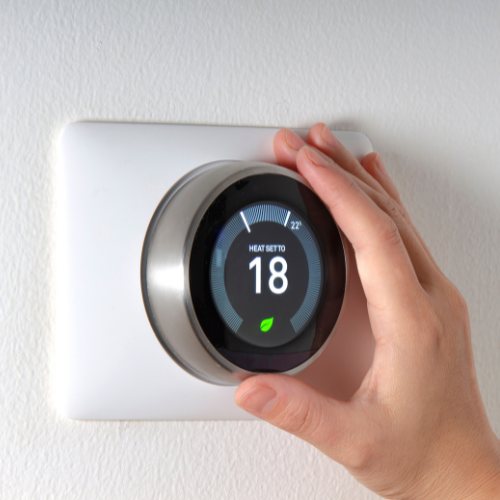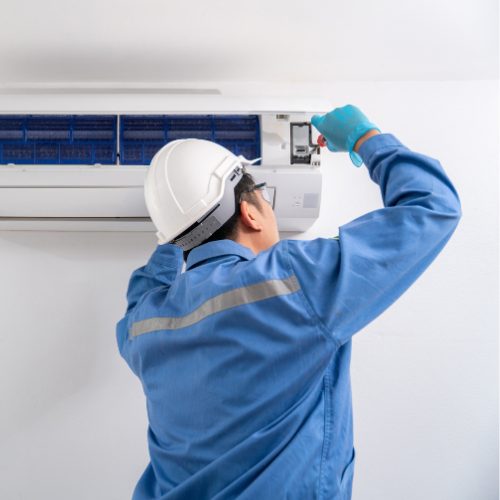Table of Contents
During the sweltering summer months, a malfunctioning air conditioner can turn your home into an uncomfortable sauna. Before you reach for your phone to call a professional, consider that repairing an air conditioner might be something you can handle yourself. This detailed guide will walk you through diagnosing and repairing an air conditioner, ensuring you stay cool all summer long.
Essential Insights into Air Conditioner Repair
Identifying Common Problems
Non-Operational Condenser
The heart of your cooling system, the condenser, plays a pivotal role in repairing an air conditioner. Issues can arise due to incorrect thermostat settings, power supply problems, or mechanical failures like a faulty compressor. For simple fixes, ensure the thermostat is properly set and the unit is receiving power. However, for compressor or motor issues, seeking professional assistance is advised.
Solving Uneven Cooling
When repairing an air conditioner, uneven cooling throughout your home can often be corrected by ensuring vents are open and unblocked. This simple step can significantly improve air distribution.
Addressing Inadequate Cooling
Repairing an air conditioner that runs but fails to cool the house adequately involves checking the thermostat settings, cleaning dirty evaporator coils, and ensuring the unit’s size matches the home’s requirements. Sometimes, a professional evaluation is necessary to determine if a larger unit is needed.
Fixing a Lack of Cooling
For an air conditioner that blows warm air, consider repairing an air conditioner by examining thermostat settings, cleaning both condenser and evaporator coils, unclogging the condensate drain line, checking refrigerant levels, or assessing the compressor’s health. While some of these tasks are DIY-friendly, issues like refrigerant replenishment or compressor problems require specialized skills.
Preventing Frequent Cycling
If your unit turns on and off repeatedly, repairing an air conditioner might involve clearing obstructions around the condenser or addressing faulty wiring and dirty coils. Regular maintenance can prevent these issues.
Thermostat Troubles
A crucial step in repairing an air conditioner involves ensuring the thermostat functions correctly. Problems often stem from dead batteries or improper placement, affecting the entire system’s efficiency.
What You’ll Need
Step-by-Step Air Conditioner Repair Guide
1. Power Supply Check
Initiating the process of repairing an air conditioner begins with ensuring the unit has power. Check the breaker or fuse panel to solve simple electrical issues.
2. Air Filter Replacement
One of the most straightforward steps in repairing an air conditioner involves changing the air filter. A clean filter promotes efficient operation and should be replaced regularly.
3. Thermostat Testing
A pivotal aspect of repairing an air conditioner is verifying the thermostat’s operation. Adjust the settings and check its power source to ensure it communicates correctly with the air conditioner.

4. Dealing with Ice Build-Up
When repairing an air conditioner, removing ice build-up is crucial. Turning off the cooling function or the system itself allows the ice to melt naturally.
5. Vent and Compressor Maintenance
Effective air conditioner repair includes cleaning vents and maintaining clear space around the compressor. This ensures unobstructed airflow and efficient cooling.
6. Duct Inspection and Cleaning
Inspecting and cleaning air ducts is a critical component of repairing an air conditioner. This task helps maintain consistent airflow and cooling efficiency throughout the home.
7. Coil Maintenance
Whether you’re cleaning the evaporator or compressor coils, this maintenance is essential in repairing an air conditioner. Clean coils ensure optimal performance and cooling efficiency.
8. Coolant Line Inspection
Repairing an air conditioner also involves checking coolant lines for leaks or damage. While insulation repairs are manageable DIY tasks, refrigerant issues should be handled by professionals.
FAQs for Repairing an Air Conditioner
Q: How often should I attempt repairing an air conditioner myself? A: While basic maintenance and simple repairs can be done regularly, complex issues require professional expertise.
Q: What’s the best way to prevent air conditioner problems? A: Regular maintenance, including cleaning filters and coils and checking the thermostat, can prevent many common issues.
Q: Can I refill the refrigerant in my air conditioner myself? A: No, handling refrigerant requires special certification due to environmental regulations and safety concerns. Always contact a professional for these services.
Conclusion
Repairing an air conditioner doesn’t always require professional help. With the right knowledge and tools, many common issues can be resolved, saving you time and money. Remember, consistent maintenance is key to preventing problems and ensuring your air conditioner runs efficiently all summer long. However, don’t hesitate to call in experts for more complex repairs to ensure your system remains in top condition.



